The old public chain Fantom has recently become popular again.
Last October, the Fantom Foundation announced the Sonic upgrade plan, claiming that the plan introduced a number of technological innovations that can greatly improve the performance and scalability of the Fantom network.
On August 2 this year, the official team officially announced that Fantom was renamed Sonic Labs, and plans to gain support by introducing a large-scale incentive plan. Sonic will use the S token. This new token will enter the ecosystem through large-scale airdrops, simplified staking, incentive plans, etc. Although the transition from Fantom to Sonic Labs has been completed, the launch of Sonic will have to wait until the fourth quarter.
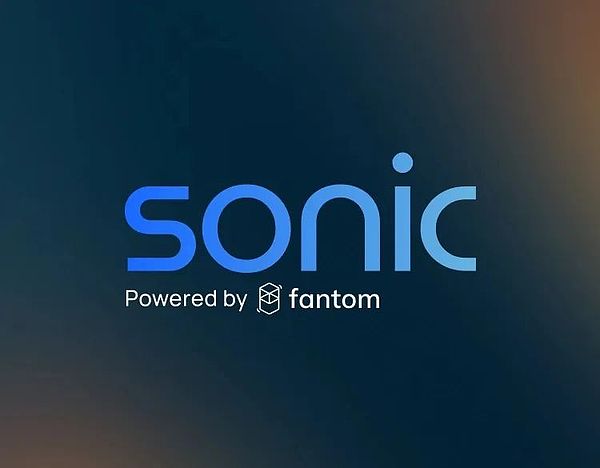
In addition, on August 14, the Sonic Labs team also announced at X that Andre Cronje, a director of Sonic Labs, has officially become its new chief technology officer (CTO). Andre will continue to lead the design and development of the Sonic network, focusing on building the new native bridging technology of "Sonic Gateway", which will greatly improve the security and convenience of transferring assets from other chains (such as from Ethereum to Sonic).
So, from Fantom to Sonic Labs, what exactly has changed on this chain?
To explain the changes in detail, we must first start with the history of Fantom.
History of Fantom
Fantom is an L1 blockchain founded by computer scientist Ahn Byung, with the initial goal of overcoming the scalability, security and decentralization trilemma faced by traditional blockchains through innovative blockchain technology.
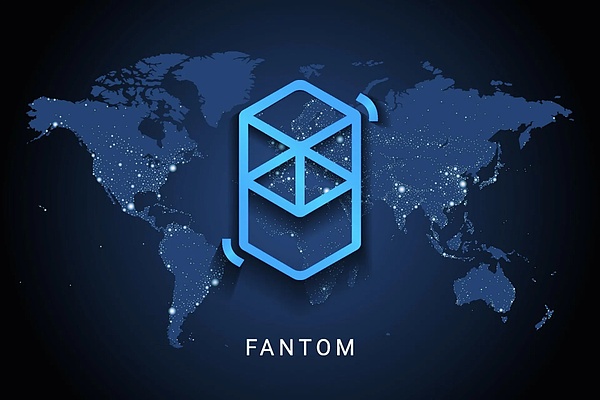
The technical foundation of Fantom is Lachesis, an advanced asynchronous Byzantine Fault Tolerant (aBFT) consensus mechanism based on directed acyclic graphs (DAGs), which allows different blockchains to exist asynchronously without slowing down the main network. This innovation gives Fantom significant advantages in both processing speed and cost.
In 2019, Fantom launched the Opera mainnet compatible with the Ethereum Virtual Machine (EVM). By supporting Solidity and EVM, Fantom is able to seamlessly support Ethereum-based dApps, allowing developers to easily migrate their applications. This feature has made Fantom gain widespread attention in the market, and it was even once called the "Ethereum killer." During 2020-2021, with the rapid development of the DeFi track, Fantom became one of the popular projects in the DeFi track with its efficient transaction processing capabilities and low fees. Andre Cronje, a leader in the DeFi field, also joined the Fantom Foundation during this period and promoted the development of Fantom in the DeFi ecosystem. He launched star projects such as Yearn Finance and introduced a large number of developers and users to Fantom, bringing Fantom's total locked volume (TVL) to a peak of US$8 billion during the 2021 bull market.
In 2022, due to Andre Cronje's announcement of a temporary withdrawal from the DeFi industry, market confidence in Fantom dropped significantly, and the price of FTM tokens fell from a peak of $30 to $0.19.
In addition to the challenges in DeFi, as the new generation of Layer-1 blockchains (such as Solana, Avalanche, etc.) have set higher standards in terms of performance and scalability, Fantom is also treading on thin ice in terms of transaction throughput, storage efficiency, and smart contract execution speed.
Therefore, in order to continue to attract developers and users, Fantom needs a more efficient and scalable technical foundation. This requires not only improvements to existing technologies, but also sufficient flexibility for future expansion, and the Sonic upgrade plan was proposed in this context.
In short, in this upgrade, Sonic Chain will consist of the L1 Sonic network and the native L2 that can be fully connected to Ethereum. From the perspective of Ethereum, Fantom is like an L2, but with the speed and security of L1. Sonic will be a hybrid L1 and L2 EVM network because it is fully integrated into Ethereum. There are mainly two core components involved: the Fantomvirtual machine, and the Carmen data storage solution and optimization.
The core of the Sonic upgrade
FantomVirtual Machine(FVM)
The Fantom Virtual Machine (FVM) is one of the key components in this Sonic upgrade. It is a major improvement over the existing Ethereum Virtual Machine (EVM). FVM aims to solve the performance bottleneck problem of EVM and provide developers and users with a more efficient smart contract execution environment.
FVM is fully compatible with EVM, which means that all existing EVM-based smart contracts can be seamlessly migrated to the Fantom network without any modification to the code. For developers, this compatibility reduces migration costs and development workload while retaining the broad support of the EVM ecosystem.
The engine architecture of FVM has been fully optimized to support a more efficient execution environment than EVM. The specific performance improvements are reflected in the following aspects:
FasterSmart ContractExecution Speed: FVM's throughput and speed in processing smart contracts are much higher than EVM, which significantly shortens the execution time of complex contracts.
Lower Transaction Latency: FVM can process transactions and generate blocks faster, reducing the waiting time for users when conducting transactions and improving the overall user experience.
Higher Resource Utilization: By optimizing the use of computing and storage resources, FVM reduces the resource consumption required for smart contract execution, making the operation of the entire network more efficient and economical.
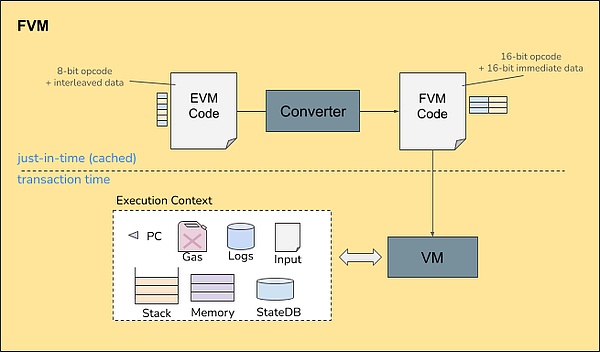
For developers, FVM claims that it is not only superior to EVM in performance, but also provides developers with more complete debugging tools, making the development and testing process of smart contracts smoother and more efficient. Although FVM still supports mainstream smart contract programming languages such as Solidity, it has also expanded its support for other programming languages, which provides developers with more options to develop in the most suitable language and framework. FVM has built-in multiple optimization strategies, allowing developers to control the execution of smart contracts more finely and further improve the performance and security of contracts.
FVM is also equipped with an automated security check mechanism that can detect potential vulnerabilities or risks before the execution of smart contracts, helping developers to discover and fix problems in advance. Its built-in sandbox environment can ensure that the execution of smart contracts will not affect other parts of the network, thereby improving the stability and security of the entire network.
Carmen Data Storage Solution
The Carmen data storage solution is another key component in the Fantom Sonic upgrade, which mainly solves the challenges faced by blockchain networks in data storage.
As blockchain networks expand, the sharp increase in storage requirements has brought a huge burden to the operation of nodes. Carmen reduces the demand for data storage and improves the efficiency and scalability of the network by introducing an innovative data storage structure.
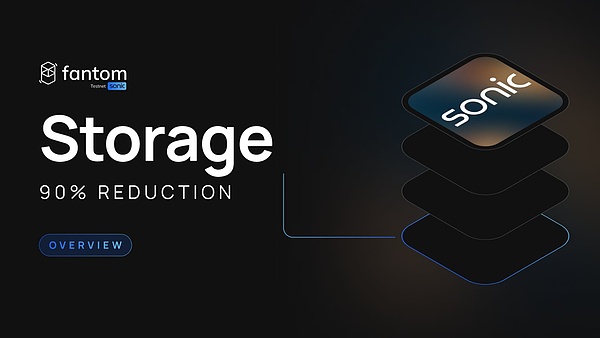
Specifically, Carmen can dynamically manage the storage and deletion of data according to the actual needs of the network, reducing the storage requirements of the verification node from the original 2000 GB to 300 GB. This optimization reduces the operating cost of the node and enables more nodes to participate in network verification, thereby enhancing the decentralization and security of the network. For example, some historical data that no longer needs to be frequently accessed can be compressed or transferred, thereby reducing the pressure on real-time storage.
In addition, Carmen can reduce the storage requirements of archive nodes from more than 11 TB to less than 1 TB. This significant reduction has greatly reduced the cost of storing historical data and improved the operability and economy of archive nodes.
In terms of data access and processing, Carmen introduces an intelligent storage strategy that can automatically adjust the storage method according to the importance and access frequency of the data. This strategy not only improves storage efficiency, but also ensures the security and accessibility of critical data. Carmen's data storage structure is optimized to facilitate data retrieval and improve overall efficiency. This is especially important for application scenarios that require frequent access to specific data, such as decentralized finance (DeFi) applications.
It is also worth mentioning that Carmen can also support parallel processing of data requests, allowing the network to maintain efficient response speed under high load conditions. This is an important feature for blockchain networks with high scalability requirements.
$S Token
Sonic Token (S) is a new token introduced by Fantom in its Sonic upgrade, which will replace the existing FTM token and drive the development of the Sonic network ecosystem.

The initial supply of Sonic tokens is 3.175 billion, the same as the total supply of FTM tokens.
At the launch of the Sonic network, Fantom provides a 1:1 conversion mechanism for FTM tokens to Sonic tokens. Existing FTM holders can choose to convert their FTM tokens to Sonic tokens, making a seamless transition to the new network. Moreover, six months after the launch of the Sonic mainnet, an additional 6% of Sonic tokens will be issued to reward Opera and Sonic users and developers.
Six months after the launch of the mainnet, 15% of Sonic tokens (about 47.625 million) will be issued each year for network growth, team expansion and marketing promotion. Unused tokens will be destroyed to prevent inflation.
According to its official news, Sonic's target annual rate of return (APR) has been set at 3.5%. In order to maintain this rate of return without triggering inflation in the first four years, the team will reallocate Opera's remaining FTM block rewards to Sonic for validator and staker rewards, which have been included in the initial supply of 3.175 billion $S tokens.
In short, Sonic tokens are not only the core assets of the Sonic network, but also play a key role in incentivizing ecosystem participants, supporting the development of decentralized applications (dApps), and maintaining network security.
Its specific functions are as follows:
Sonic tokens can be used to pay transaction fees on the Sonic network. Whenever a user conducts a transaction or executes a smart contract on the network, a certain number of Sonic tokens must be paid as a handling fee. These fees will help maintain the operation and security of the network while incentivizing nodes to participate in verification.
Sonic tokens will play an important role in the network's consensus mechanism. Users holding Sonic tokens can stake their tokens to support network verification and participate in the consensus process. Nodes that stake tokens will have the right to verify transactions and receive corresponding rewards, a process that helps maintain the decentralization and security of the network.
Users can earn Sonic token rewards by providing liquidity, which will help increase the liquidity of the network and attract more users and projects.
To run a validation node on the Sonic network, a minimum stake of 50,000 Sonic tokens is required. These nodes are responsible for verifying transactions and ensuring the security of the network.
Developers can get Sonic token rewards by building dApps on the Sonic network and attracting users to use it. This mechanism will encourage more developers to participate in the Sonic ecosystem.
Community members can also get Sonic token rewards by participating in network governance, promoting and using the Sonic network. This helps to enhance community participation and activity.
In addition to the upgrades of various mechanisms and tokens, Fantom Foundation also established an incubator called Sonic Labs in December last year, intending to invest huge resources and technology to support developers in building new projects within its ecosystem.
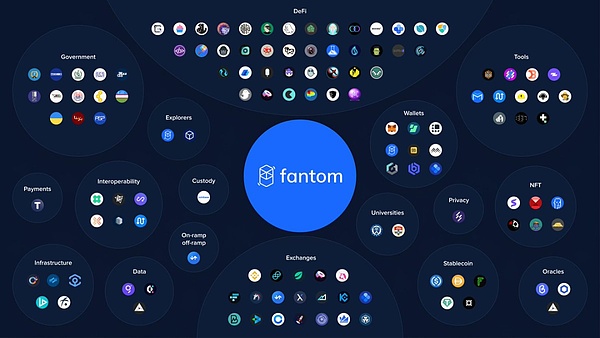
According to the award-winning projects of the startup accelerator program announced by Sonic Labs, this incubator has also achieved some results. So far, there are 351 applications in its ecosystem, covering innovations in multiple fields, including perpetual DEX (decentralized exchange), social protocols, P2P lending platforms, green technology startups, and RPG chain games.
According to reliable sources, the team behind it has more than 450 million FTMs; more than 100 million stablecoins; more than 100 million crypto assets and 50 million non-crypto assets. At the current salary consumption rate of 7,000,000 US dollars per year, the project can operate stably for 30 years
In short, although the main network has not yet been launched, as the market pays more and more attention to Layer 2 to solve the scalability of blockchain, Sonic's blockchain technology upgrade in scalability and security, the transaction processing speed has reached 2000 TPS and achieved sub-second performance, and its future development still has certain potential. Let us wait and see, and witness Sonic's further breakthroughs and growth in the field of blockchain.
 JinseFinance
JinseFinance
 JinseFinance
JinseFinance JinseFinance
JinseFinance JinseFinance
JinseFinance JinseFinance
JinseFinance JinseFinance
JinseFinance Coindesk
Coindesk Cointelegraph
Cointelegraph 链向资讯
链向资讯 链向资讯
链向资讯 Cointelegraph
Cointelegraph